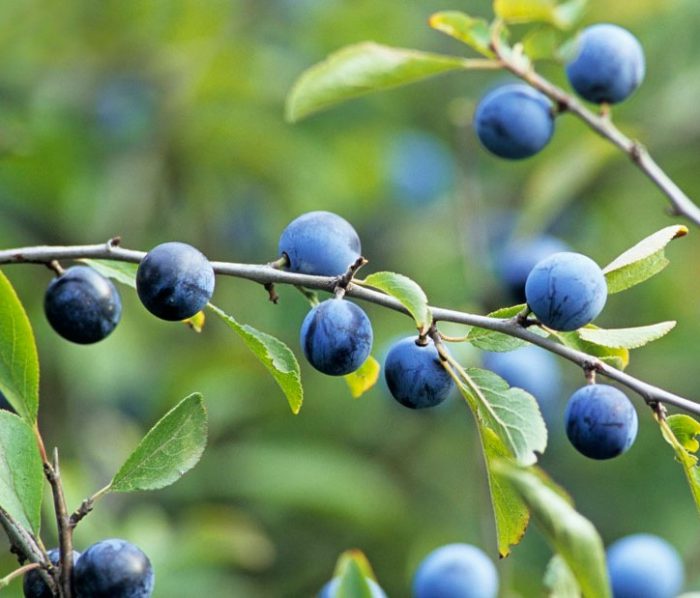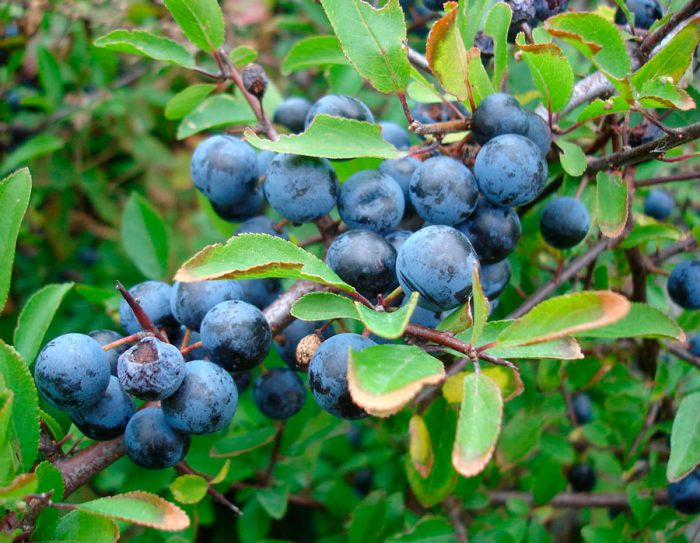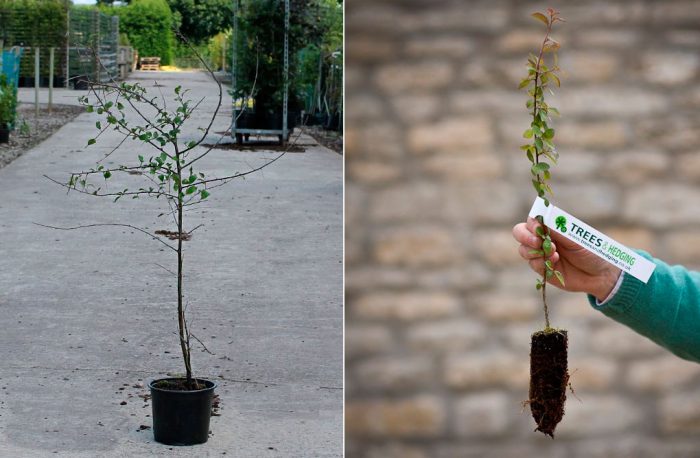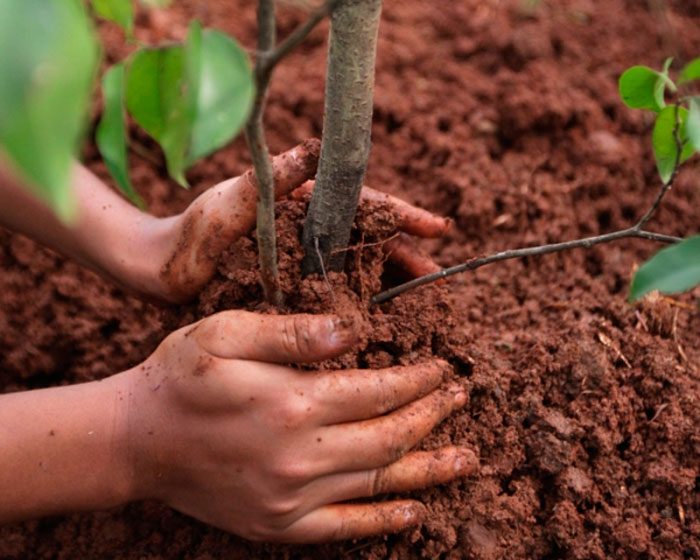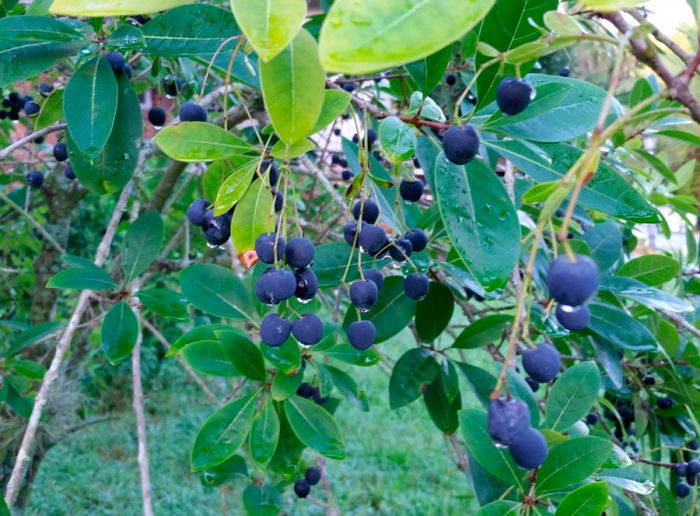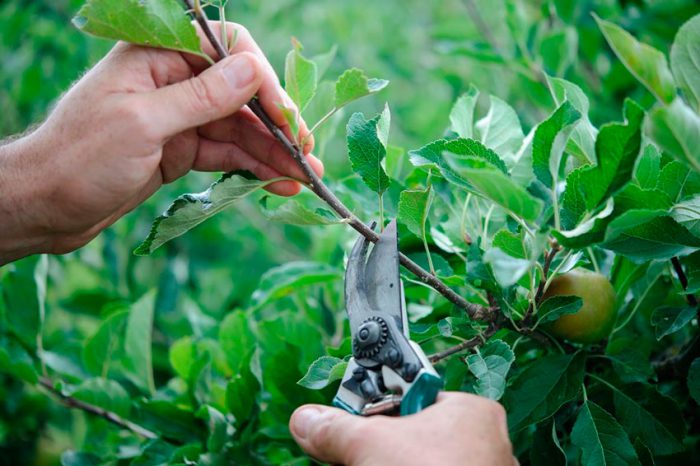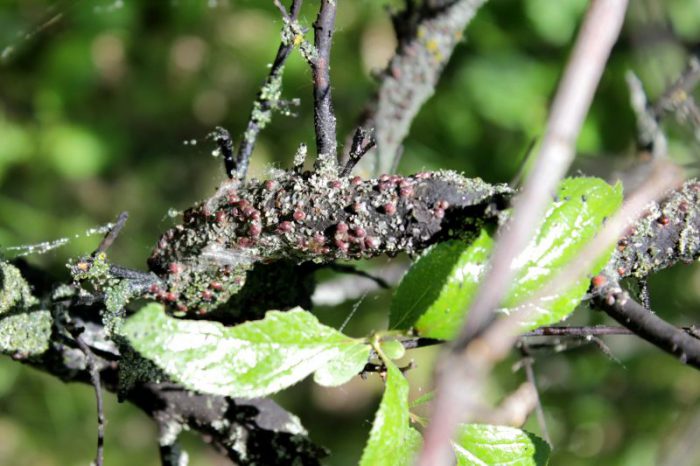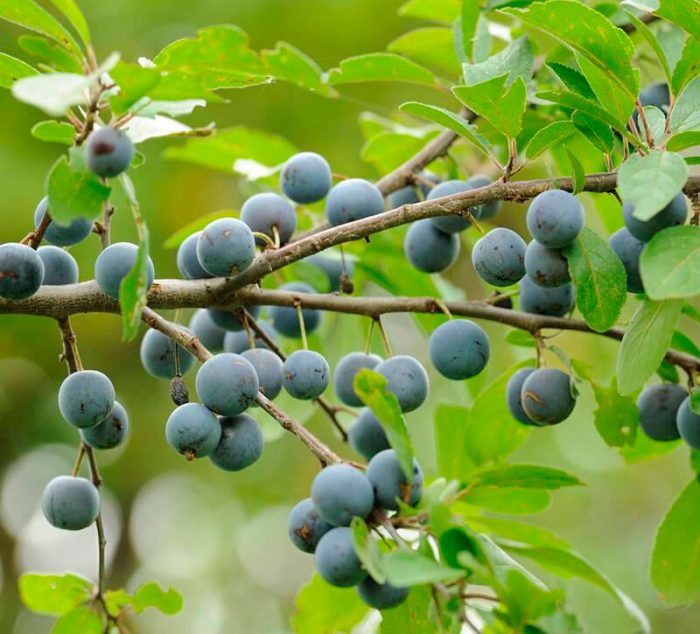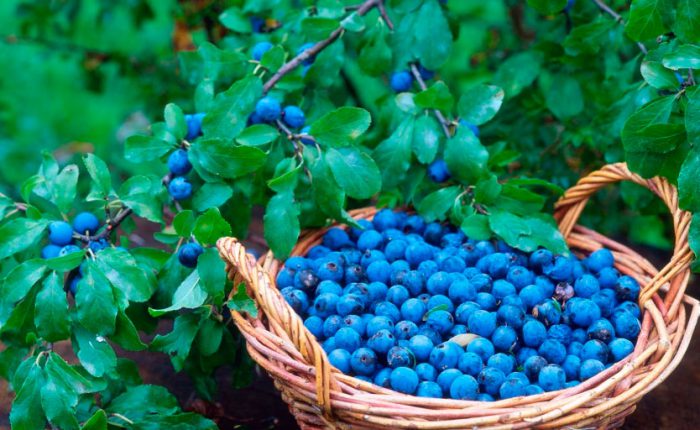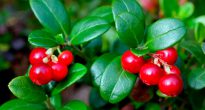Blackthorn (Prunus spinosa), also called prickly plum, either thorn or thorny, is a thorny, not very large shrub, which is a representative of the genus Plum of the Plum subfamily of the Pink family. The name of this plant comes from the Proto-Slavic language and is translated as "thorn". In nature, thorns can be found in regions with a temperate climate. It often forms very dense thickets, and prefers to grow in cutting areas and along the edges of the forest, in the steppes and in the forest-steppe. The blackthorn is found at an altitude of 1200 to 1600 meters above sea level in the Caucasus and Crimea. Also, this plant can be found in North Africa, Asia Minor, Ukraine, Western Europe, the Mediterranean, Western Siberia, and also in the European part of Russia. Man learned about the existence of thorns a long time ago, he was known during the existence of Rome and Ancient Greece. The thorns of such a bush in Christianity are considered a symbol of the suffering of Jesus Christ. The bush of thorns, engulfed in fire, was also mentioned in the Holy Scripture: “And the Angel of the Lord appeared to Moses in a flame of fire from the midst of a thorn bush. And he saw that the thorn bush was burning with fire, but the bush did not burn ... and God called to him from among the bush and made him the leader of his people. "
Content
Features of the thorn bush
The thorn can be a shrub or a short tree. The height of the shrub can be up to 3.5–4.5 meters, while the tree grows only up to 8 meters. Due to the abundant basal growth, such a shrub can grow quite actively in breadth, while difficult and very thorny thickets are formed. The taproot is buried 100 centimeters into the ground, while the root system is branched, it grows strongly and can protrude quite far beyond the crown projection. There are a large number of thorns on the surface of the branches. Elliptical obovate leaf plates reach 50 mm in length and have a serrated edge. Before the foliage opens on the bush in April or May, numerous single small five-petalled white flowers bloom. The fruit is outwardly very similar to the plum, this rounded odnokostyanka has a tart-sour taste, it reaches about 1.2 cm in diameter.The fruit is colored dark blue, and on its surface there is a waxy bloom of a bluish color.
Fruiting begins at two or three years of age. Thorn is an excellent honey plant, and it is also resistant to drought and frost. Even a person who is a beginner in gardening can plant and grow such a shrub. Blackthorns are used to create hedges, to reinforce sliding slopes, and as a rootstock for plums and apricots. To decorate your garden plot, you should choose decorative varieties of such a plant, namely: terry, red-leaved and purple thorns.
Planting thorns in open ground
What time to plant
Thorns are planted in open ground at the beginning of the spring. However, the preparation of the pit for planting should be done in the autumn, because during the winter it must have time to settle and settle. For planting such a shrub, clay, saline, dry, and also sandy soil is suitable. He is not afraid of abundant melt water in spring. But it is not recommended to plant it in excessively wet or heavy soil, because in such an area there is a high probability of frostbite of the bush. The best place for planting thorns is a sunny area with neutral moist soil rich in nutrients.
Landing features
The depth and diameter of the planting pit should be about 0.6 m. In order to prevent the uncontrolled growth of thorns, the sheer edges of the pit should be overlaid with sheets of unnecessary iron or slate. 7 days before the planting of thorns in open ground, the bottom of the planting pit should be covered with a layer of egg shells, which is recommended to be collected all winter. On top of it, you need to fill it with a soil mixture consisting of the earth taken out when digging a hole, which must be combined with 0.5 kg of superphosphate, with 1-2 buckets of compost or humus and with 60 grams of potash fertilizer. If the acidity of the soil is high, then this can be corrected by adding fluff lime into it. If a hedge is created from a thorn, then a distance of one and a half meters must be kept between the seedlings. When planting several thorns, a distance of 2-3 meters should be maintained between them.
Two-year-old seedlings purchased in advance must be prepared before planting. To do this, their root system must be immersed in a solution of sodium humate (take 3-4 large spoons for half a bucket of water). In the center of the bottom of the pit, a wooden stake should be installed, reaching a height of one and a half meters. Then a nutrient mixture must be poured into the hole so that a mound forms around the peg. Then, a seedling must be installed on the resulting slide, after the roots are carefully straightened, the pit must be filled with a nutritious earth mixture combined with fertilizers, while it only needs to be compacted a little. The root collar of a planted seedling should rise 30–40 mm above the ground. The trunk circle around should be fenced with an earthen rim, the height of which should be about 10 centimeters. Then 20 to 30 liters of water is poured into it. To reduce the number of waterings after all the liquid has been absorbed into the soil, its surface must be covered with a layer of mulch (humus). A garter to a peg of a planted plant is made at the very end.
Thorn care
After the blackthorn sapling is planted in the open ground, all its stems must be shortened. In the springtime, before the buds swell, adult plants need to arrange sanitary and formative pruning. Basic care for thorns is not much different from caring for other shrubs grown in the garden. It needs to be watered on time, loosened the surface of the trunk circle, feed, weed, remove root growth and carry out sanitary and shaping pruning. You also need to timely collect ripe fruits and properly prepare the shrub for wintering.
How to water
A seedling planted in open ground should be watered at first 1 time in 7 days, then watering is reduced to 2 times a month. After the seedling starts to grow, and leaf plates open on it, they rarely begin to water it. If it rains regularly in the summer, then watering the shrub is unnecessary, because it is highly drought tolerant. However, if the dry period lasts too long, then under the bush you need to pour from 20 to 30 liters of water, which should not be cold.
Fertilizer
In order for the fruiting of thorns to be distinguished by its abundance and regularity, it must be fed in time. To do this, every year organic matter is introduced into the soil of the trunk circle (1 bucket of humus per 1 bush) or a solution of complex mineral fertilizer. With age, the need for fertilizers in shrubs increases.
Pruning thorns
Pruning of this culture is carried out in the spring before sap flow begins, as a rule, this time falls on March. For sanitary purposes, it is necessary to cut out all injured, dried, damaged by disease or frost stems and branches.
Blackthorns have a tendency to thicken the crown, so it needs systematic thinning. He will also need formative pruning, for this it is necessary to leave 4 or 5 fruiting branches in young bushes, while the rest should be cut at the root. Most often, gardeners form the crown of a thorny plum in the form of a bowl. To do this, in the first year of growth, the seedlings planted in a permanent place must be shortened to 0.3-0.5 meters. In the second year of growth, all but the most powerful stems should be cut out, and they should be located in a circle.
In the fall, the shrub is cut only if necessary. As a rule, at this time, the thorn needs only sanitary pruning, while the branches that are injured or affected by the disease are cut out. This procedure is carried out after all the leaves have flown from the bush.
Reproduction of thorns
Thorns can be propagated in a generative (seed) way and vegetatively: by root suckers and cuttings. It will not be possible to quickly propagate this culture in a generative way. If you need to get material for planting as quickly as possible, then vegetative methods should be chosen for this.
Propagation of thorns by seeds
In the first autumn weeks, the seed must be removed from the fruit and cleaned of the remaining pulp. Then the bone is planted in open ground. Sowing can be done in the spring, but in this case the bones will need preliminary stratification, for this they are placed on the refrigerator shelf for the whole winter. Some gardeners recommend immersing the seeds in honey syrup for 12 hours before sowing, the seedlings from such seeds will seem much faster. After that, they are sown, burying them into the soil only 60–70 mm. The surface of the plot with crops must be covered. Immediately after the seedlings appear on the surface, the shelter must be removed. After the seedlings are 2 years old, you need to transplant them to a permanent place.
Propagation of thorns by cuttings
Cuttings must have at least 5 absolutely healthy buds. In springtime, cuttings should be planted for rooting in a container filled with fertile soil. The container should be transferred to a greenhouse or covered with a cap on top, which must be transparent. During the summer period, they will need to provide regular watering and feeding with a nutrient solution. By the onset of the autumn period, the cuttings will become full-fledged seedlings, in which the root system will be very well developed.
How to propagate by root shoots
Separate the suckers very carefully from the parent bush. Then they will need to be planted in pre-made planting holes, while the distance between them should be about 100-200 cm. They need exactly the same care as the seedlings.
Diseases and pests of blackthorn
Blackthorn has a fairly high resistance to diseases and pests. In very rare cases, this shrub gets sick with gray rot (monilis). This fungal disease is caused by the fungus monilia, which can penetrate the pistil of a flower. The disease primarily affects the very young stems of the bush. After some time, the foliage and stems of the thorns change their color to dark brown. The disease always spreads through the bush from top to bottom. Instead of fallen leaves, a new, green one appears, but at the end of the summer period the onam turns yellow and flies around, a significant decrease in fruiting occurs. All those fruits that have survived crack, and rot forms on them. To get rid of gray rot, it will be necessary to spray the affected bush with a solution of a fungicidal preparation. At the very beginning of the spring period, the thorn must be treated with a Horus solution (this drug is the only one that can be used at sub-zero temperatures). When it gets warm outside, it will be possible to use Gamair, Bordeaux liquid, Abiga-Peak, Rovral or copper sulfate for processing. Before you start preparing the solution, you must carefully read the instructions and follow them.
The most dangerous pest for such a plant is aphid. It is a sucking insect that feeds on the plant sap. Aphids suck it out of young shoots and foliage, which causes their deformation and yellowing. This insect can do a lot of harm to thorns, as it is extremely prolific. And aphids are also the main carrier of viral diseases, which today are incurable. In order to get rid of such a pest, the bush must be sprayed with a solution of an acaricidal drug (for example, Aktara, Antitlin, Aktellik, etc.). To achieve a lasting result, you will need several treatments.
Types and varieties of blackthorn
The most popular varieties and hybrids of blackthorn are:
- Sweet TLCA... The fruits are sweet-sour, almost impatient.
- CROSS No. 1... Plant height is about 250 centimeters. On the surface of the purple fruit is a dense bloom of wax. The sweet-sour pulp is slightly tart in taste. The fruits weigh about 6-7 grams.
- CROSS No. 2... The round purple fruits weigh about 8 grams. Their taste is sweet-sour, slightly tart.
- Yellow-fruited... This is a hybrid of the second generation between thorn and cherry plum. The fruits have a pleasant taste and yellow color.
- Apricot... It is a hybrid between apricot and thorn. The color of the fruits is pale lilac-pink, their taste is quite pleasant with apricot notes.
- Fragrant-1 and Fragrant-2... It is a hybrid of the American-Chinese Toca plum and blackthorn. The height of such a tree is about four meters. Fruits of purple color have a flat-round shape, they weigh from 8 to 10 grams. The yellow flesh has a sweet-sour taste, with no astringency at all. The pulp has the finest aroma of apricot and strawberry. The stone is small, separates very well from the pulp.
- Shropshire... The variety was created by English breeders. Fruits are sweet-honey, impatient.
- Cherry plum (Cherry)... The bush reaches a height of about 300 centimeters. The crown is of medium density and has a rounded shape. On the surface of the dark purple fruit there is a waxy bloom, they weigh about 5-6 grams and have a round shape. The green dense flesh has a sour and tart taste.
- Cherry... This tree reaches a height of 300 cm. Large, rounded purple fruits on the surface have a dense waxy bloom. Such fruits weigh about 8.5 grams. Green dense pulp with sweet and sour taste, slightly tart.
- Prunes... It is a hybrid between blackthorn and cherry plum. The color of the fruit can be of various yellow-blue-red shades.
- Garden No. 2... The height of this shrub is about two meters.Globular fruits can be almost black or dark blue in color. On the surface there is a bloom of a bluish color. The pulp tastes great.
The properties of thorns: harm and benefit
Useful properties of blackthorn
Blackthorn has incredibly healthy fruits, as they contain sugars (fructose and glucose), malic acid, pectin, carbohydrates, steroids, fiber, triterpenoids, vitamins C and E, coumarins, nitrogen-containing compounds, tannins, flavonoids, higher alcohols, mineral salts , fatty acids linoleic, palmitic, stearic, oleic and eleostearic. Both fresh and processed fruits have an astringent effect, so they are used for stomach and intestinal disorders, for example: dysentery, candidiasis, ulcerative colitis, food poisoning and toxic infections. For infectious diseases, thorn wine is used as a healing drink.
Blackthorn fruits are used in the treatment of neuralgia, metabolic disorders, liver and kidney diseases, vitamin deficiencies, and they also have antipyretic and diaphoretic effects. The flowers and fruits of such a plant are used for edema, kidney stones, cystitis, gastritis, boils and pustular skin diseases. Flowers have a mild laxative effect, they are used to treat skin diseases that depend on the body's metabolism. Also, these flowers will help regulate intestinal motility and contraction of the renal ducts, since they differ in diaphoretic, hypotensive and diuretic effects. A decoction of flowers is used for shortness of breath, furunculosis, hypertension, constipation and nausea.
Freshly squeezed blackthorn fruit juice has antimicrobial activity against protozoan parasites, it is used for intestinal disorders and giardiasis. A decoction made from flowers is used for inflammation of the mucous membrane of the esophagus, throat and mouth. Tea made from thorn foliage has a slight laxative effect and also helps to increase urine output. It is taken for chronic constipation, cystitis and prostate adenoma. It is also recommended to drink it for those people who lead a sedentary lifestyle.
Preparations made on the basis of blackthorn have a fixing, diuretic, antimicrobial, anti-inflammatory and expectorant effect, they also help to reduce vascular permeability and relax the smooth muscles of internal organs.
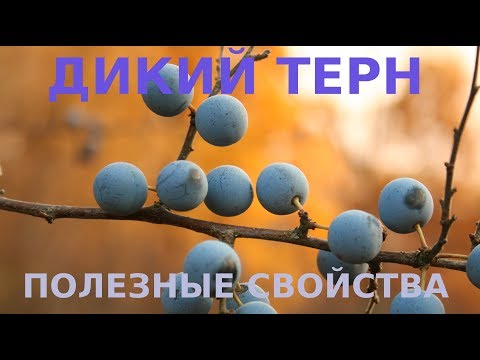

Watch this video on YouTube
Contraindications
Blackthorn fruits contain a fairly large amount of acid, which can harm people suffering from gastritis, ulcers, or high acidity of the stomach. Since they have a very intense color, this can cause an allergic reaction. Inside the bones is the strongest poison, in this regard, try not to swallow them. Also, the turn is contraindicated for people with individual intolerance. If you eat a lot of blackthorn fruits at a time, then this can harm the body of even a relatively healthy person.

